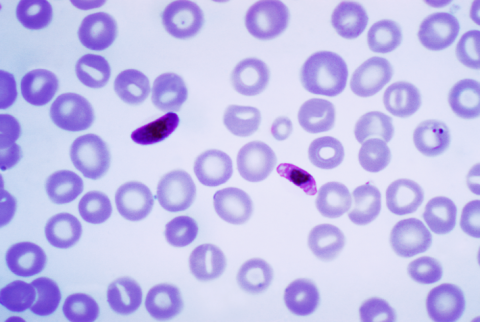New antimalarial compounds identified that kill parasites in the mosquito vector
A study has identified and tested 22 compounds that inhibit the development of Plasmodium falciparum—one of the parasites that cause malaria—in the mosquitoes that transmit it. The most effective molecule killed 100% of the parasites present within six minutes, even in insecticide-resistant mosquitoes, according to the study published in Nature. These compounds could be used to treat bed nets.

Consuelo - malaria
Consuelo Giménez Pardo
Professor of Parasitology at the University of Alcalá (UAH) and director of the Master's Degree in Humanitarian Health Action (UAH-Doctors of the World)
The strategy to combat malaria, especially severe malaria caused by Plasmodium falciparum in sub-Saharan Africa, involves progress in treatment through new potential drugs. It also includes the search for new vaccines with higher efficacy rates and the use of insecticide-treated bed nets that, over time, do not generate resistance in mosquitoes. Bed nets are a very good option while other treatments are being developed, because we know they work.
The general idea of this study is to eliminate Plasmodium falciparum parasites by applying antiparasitic compounds to insecticide-treated bed nets—an interesting approach, especially as insecticides lose efficacy over time.
The authors of the study use Anopheles gambiae mosquitoes as vectors and Plasmodium falciparum parasites to test 81 antiparasitic compounds with 28 modes of action, 22 of which are active against the parasite's early stages. The researchers have previously worked on this topic, observing that some compounds (inhibitors) interrupt the development of the parasite in the gut lumen—specifically, they block the transition from zygote to ookinete. By inhibiting the later growth of oocysts, the invasion of sporozoites into the salivary glands is delayed, which increases the parasite’s incubation period and reduces the vector capacity of a mosquito that lives two to three weeks.
In this case, polyethylene prototypes are used to demonstrate that the best candidate compounds from the study remain active for a long period of time on materials similar to those of bed nets. For this to work, the antimalarial targeting mosquitoes must be absorbed through the tarsi (legs) of the vector mosquito when it lands on a surface treated with the drug. Therefore, the activity of the active compounds is evaluated through tarsal contact assays, allowing mosquitoes to briefly land (up to six minutes) on a glass surface coated with the compound of interest before infection.
The work is very interesting, but it raises other problems that will need to be addressed. One of them is that many of the antimalarial compounds used alongside the insecticides on bed nets should not share targets with clinically used antimalarials. However, the fight against such a complex parasite as the malaria parasite is a long journey that brings progress as well as many new questions to answer. Nothing new.
- Research article
- Peer reviewed



